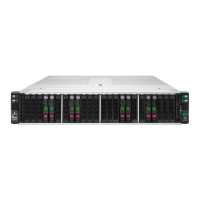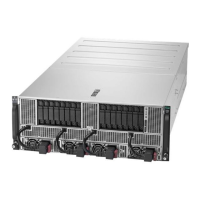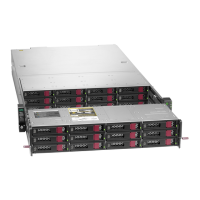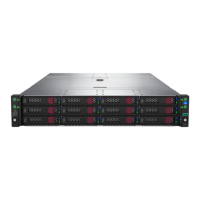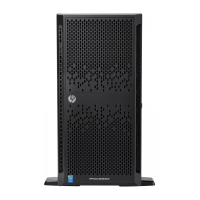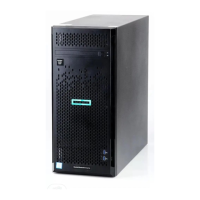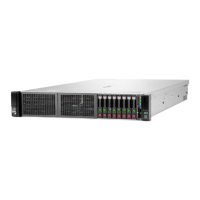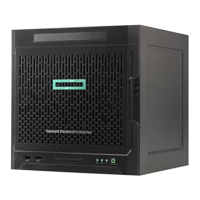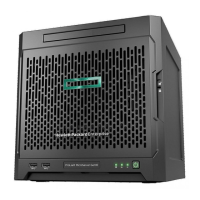Hardware options installation 71
• Use either the APM port or an iLO port to connect to a network. Having both ports connected at the
same time results in a loopback condition.
• Do not connect both iLO ports to the network at the same time. Only one iLO port can be connected
to the network, while the other iLO port can be used only as a connection to a second enclosure.
Having both ports connected at the same time results in a loopback condition.
For more information about product features, specifications, options, configurations, and compatibility,
see the product QuickSpecs on the Hewlett Packard Enterprise website (http://www.hpe.com/info/qs).
To install the component:
1. Power down all nodes ("Power down the node" on page 32).
2. Disconnect each power cord from the power source.
3. Remove the cover from the RCM cable connector.
4. Remove the strain relief strap from the bottom power supply handle.
CAUTION:
Avoid tight bend radii to prevent damaging the internal wires of a power cord or a
node cable. Never bend power cords and node cables tight enough to cause a crease in the
sheathing.
5. If only one power supply is installed, do the following:
a. Route the strain relief strap through the RCM module and around the handle of the bottom power
supply.
b. Install the RCM module onto the bottom power supply.
